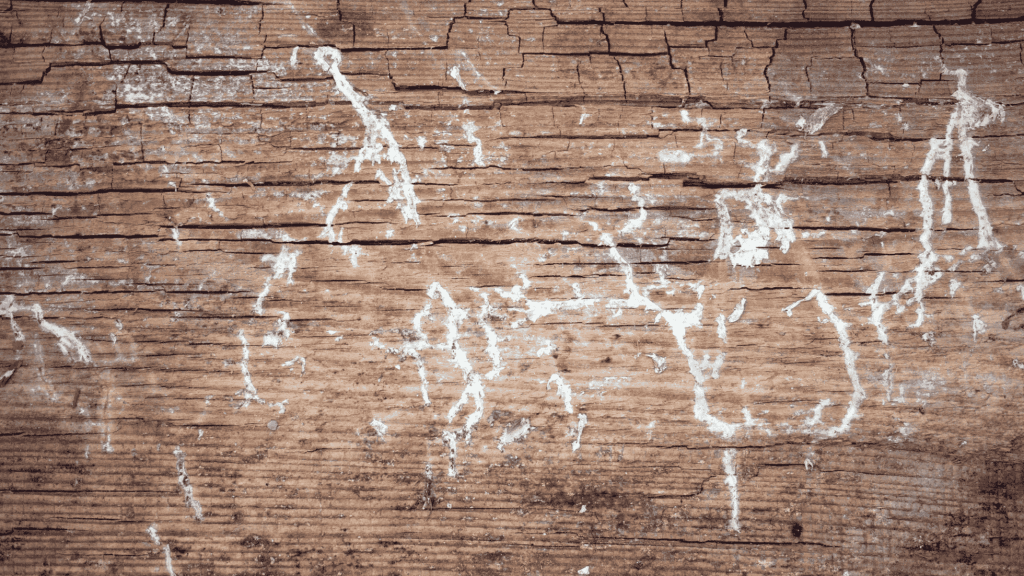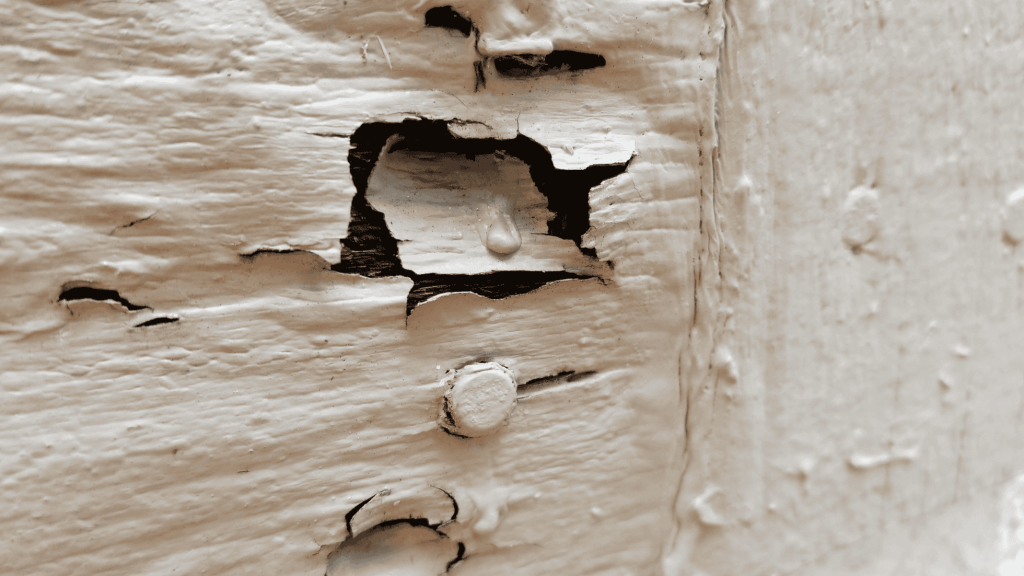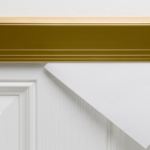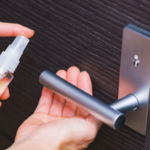Rot is a problem that’s plagued timber for as long as human beings have been making things out of it.
Not a problem for other door materials such as aluminium or uPVC, but it’s especially troublesome in the case of wooden doors and door frames, which not only need to look great, but also need to serve an important security function.
Let’s take a look at rot in wooden exterior doors and how best to deal with the problem.
What causes a wooden door to rot?
‘Rot’ is what happens when a material is eaten by microscopic organisms. In the case of wood, fungi are usually responsible. As they chew through the wood fibres, the timber begins to lose its structural integrity, until it eventually falls apart. If the wood is supporting something, then this can be disastrous!
The sorts of fungus that cause wooden doors to rot needs moisture to survive. If the timber is soaked through, then it’ll spread rapidly. That’s why timber storage facilities insist on such tight humidity controls; even the slightest variation can have terrible consequences.
Timber rot comes in two forms: dry rot and wet rot. The former requires just 20% moisture content to get started, the latter closer to 50%. In both cases, you’ll need to deal with the source of the moisture to prevent the problem from recurring.

How can you tell if a wooden door is rotten?
Rotten wood evidences itself with a few different symptoms. Let’s take a look at dry rot first:
To begin with, dry rot will look a little bit like a sheet of cotton spread over the wood. These are the hyphae of the mould.
When the hyphae spawn, they will form into large clumps.
Finally, you’ll see these clumps form into actual fungus which will release more spores.
Timbers which are infested with dry rot will begin to split and crack. Look for long cracks running across the grain.
Eventually, dry rot will cause the timber to weaken. Apply some light pressure with your fingers. If the wood buckles, or even crumbles, then you have a dry rot problem.
Wet rot is not quite as dangerous as dry rot, but it’s still worth looking out for. Concentrate your inspection in places where moisture is likeliest, such as outdoor porchways.
Check finished surfaces by applying pressure with a thin knife. Healthy timber should offer a bit of resistance; if the blade sinks in easily, the chances are strong that you have a problem. You can repeat this inspection with your fingers, a spongy texture indicates that all is not well.
Rotten timber also looks different. The timber tends to look a little bit darker, even beneath a coat of paint.

How long does it take for wood rot to spread on a door?
The time it takes for rot to spread on a door can vary depending on things such as moisture levels, temperature and the type of wood – softwoods such as pine are likely to rot more quickly than hardwoods such as oak and acacia (but are usually cheaper too).
In humid or damp environments, rot can start to develop within a few months and spread rapidly if not addressed.
Once wood is consistently exposed to moisture, the fungi responsible for rot can cause significant damage in as little as 6 to 12 months. It’s important to inspect wooden doors regularly and treat any signs of rot quickly to prevent further deterioration.
Can a rotten wooden door be repaired, or does it need replacing?
Whether a rotten wooden door can be repaired or needs replacing depends on the extent of the damage.
If the rot is localised to a small area, you can often repair it using polyester wood filler or epoxy resin. However, if the rot has spread to a much larger area, the door jambs or the door frame, compromising the door’s structure or integrity, replacement is usually the best option.
When deciding, it’s important to assess whether the door is likely to remain sturdy and functional after repairs, as weakened wood could reduce insulation, compromise security or even lead to further damage.

How to Fix a Rotting Wooden Door
Let’s look at how to repair door rot. Rotten wood needs to be removed and then replaced.
The way you do this will depend on how far the rot has spread, if it’s just a small area, then:
- Start by removing the damaged wood. You can usually do this with a Stanley knife or other sharp tool because the wood will be soft.
- Next, it’s time to fill in the gap. Do this with a polyester filler and putty knife. If you’re fixing a natural-grain door, then pick a wood-coloured filler. If you’re fixing a white door, then choose a white filler.
- Spread it into the recess so that it sits slightly flush from the surface.
- Allow the filler to dry.
- If necessary, apply another coat.
- Sand the filler down to a smooth surface.
- Using a damp cloth, wipe away any loose dust.
- Finally, it’s time to prime and finish the wood. If you’ve done everything right, the transition should be seamless.
In some cases, the rot might be so extensive that you need to cut out and replace large portions of the trim (or the door frame).
The process in such cases is similar, but this time blocking may be a more effective option.
Instead of a wood filler, you’ll cut out the wood rot (with a small margin of good wood) and splice in a new piece of the same type of timber and some wood glue, so that you get the appearance of a single uninterrupted length. Once sanded back and smooth, you can then paint or stain it to match the rest of the door.
If you’re not completely comfortable doing this as a DIYer, be sure to seek professional help. If the job isn’t done well, it could lead to further water ingress and ultimately lead to needing a whole new door.
How to Prevent Wood Rot
Prevention is better than cure so they say, and this is especially so when it comes to rotted wood in your external doors.
Fix Cracked Paintwork Immediately
Inspect your doors regularly. Make a point, once a year, of going around and looking for any cracks that might have appeared in paintwork.
If you notice cracks, then moisture will have a point of entry. Sand down the affected areas and refinish it to avoid moisture buildup.
Seal Surrounding Walls and Frames
Before fitting a new door, you can cover the adjoining walls in sealer. This will help prevent moisture from spreading in from beneath.
Once the timber door and frame is in place, you can prime it. If you do this before attaching the hardware, you’ll be able to more easily cover the entirety of the door – leaving no part unprotected from water ingress and thus help prevent wood rot.
Add a Weatherboard or Canopy
Finally, it’s worth looking into a weatherboard. This is an angled strip of material that sits at the bottom of an external door and prevents water from collecting at the base of the frame.
You can also limit the amount of water that falls on your door and door frame in the first place. If there’s a gutter overhead, make sure that it’s regularly cleared to prevent it from spilling down onto the door. You could even add a storm canopy over your door or create a small porch if budget allows, this will help protect your doors from the elements as well as you and your visitors when entering the house.
Can rot spread from a wooden door to other parts of the home?
Yes, unfortunately rot in a wooden door can spread to other parts of your home if it’s not addressed early.
When a wooden door begins to rot, it typically means moisture has infiltrated the wood. If left untreated, this moisture can affect nearby wooden structures such as door frames, skirting boards and flooring.
Over time, this can lead to more widespread damage, as moisture and rot create the ideal environment for mould growth and structural weakening. It’s essential to address the issue early to prevent extensive damage.

Prevention is Key
Timber rot can be a big problem when it comes to doors, but if you catch it early, then you can intervene before it does too much damage.
Prevention is key. It’s important to inspect all of your wooden doors for problems regularly, and take steps to remedy the source of any damaging moisture.
External doors, along with those in kitchens and bathrooms, should be considered a priority. With proper care and attention, your wooden doors should remain in tip-top condition for many years to come!





